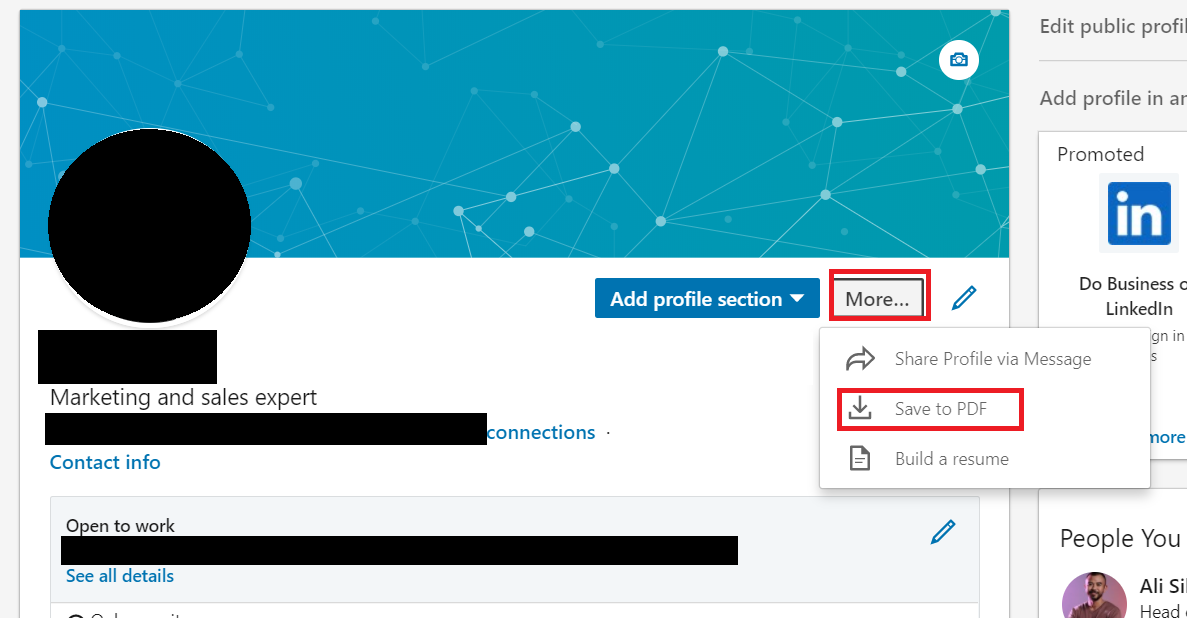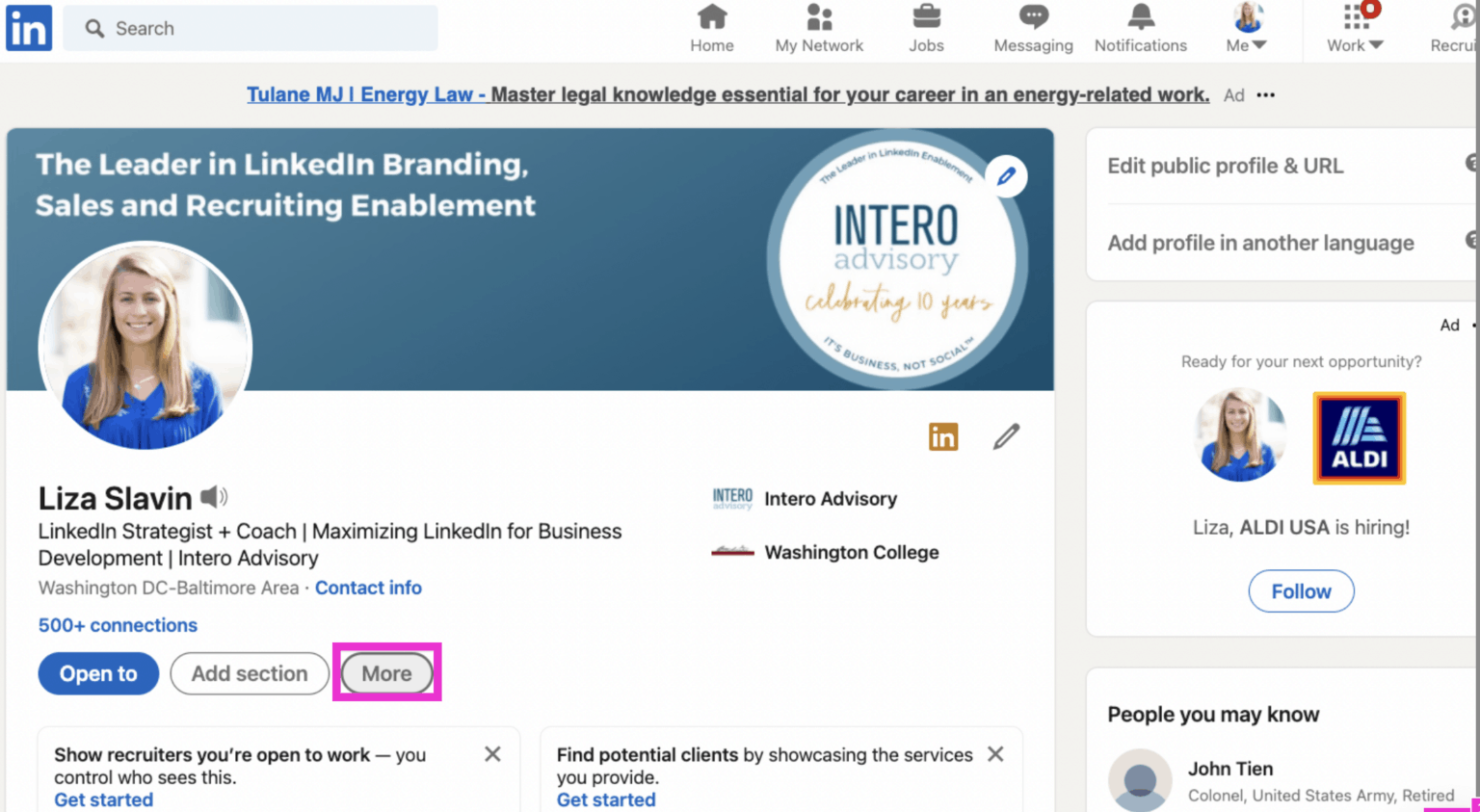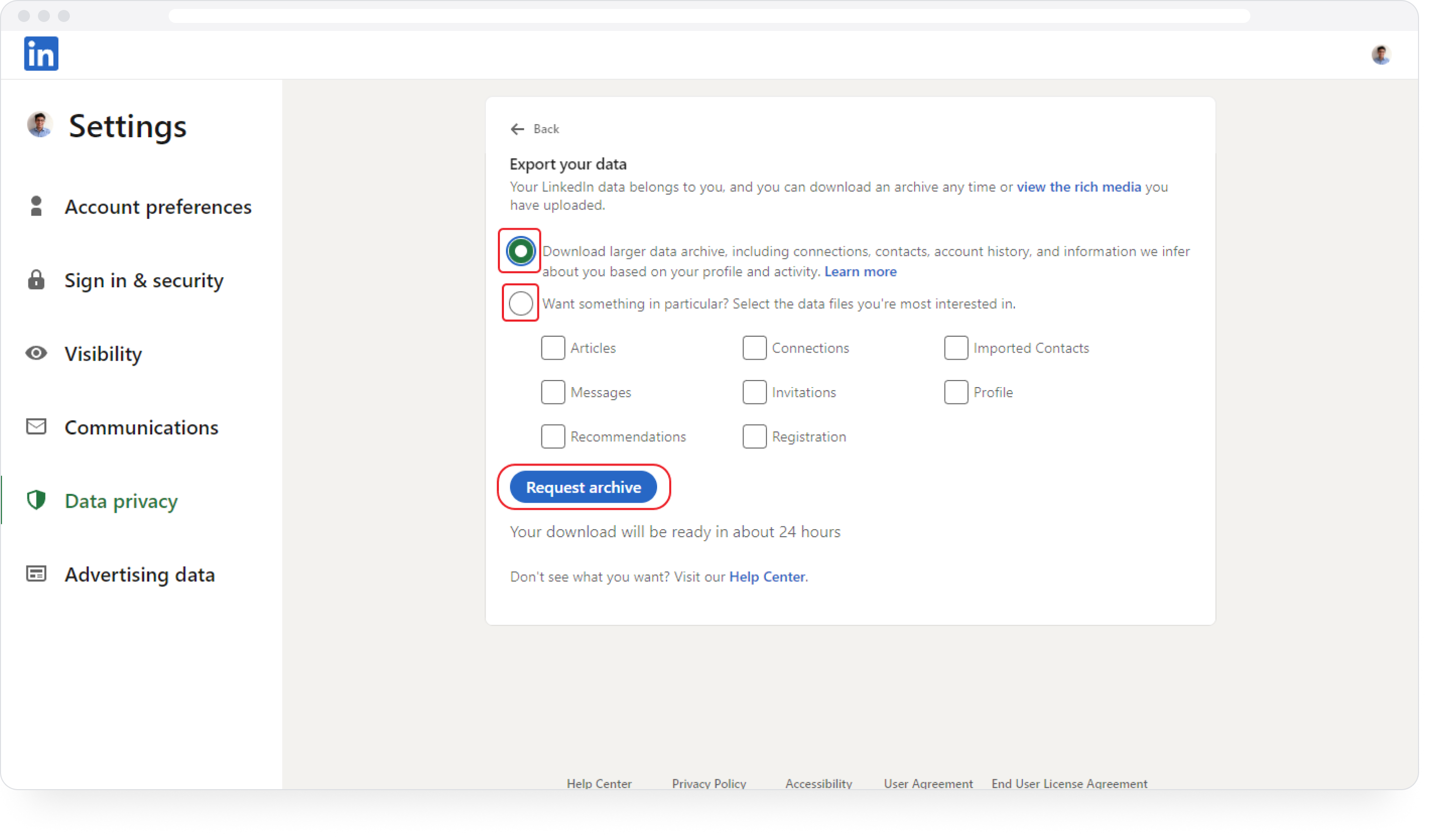Have you ever thought about what would happen to your LinkedIn profile if you suddenly needed to leave the platform or wanted to keep a backup? Downloading your LinkedIn profile is a smart move for anyone who values their professional network. In this guide, we’ll walk you through the simple process of archiving your
Why Download Your LinkedIn Profile?

There are several compelling reasons to download your LinkedIn profile, and understanding them can help you appreciate the importance of this task. Here are some of the key reasons:
- Preserve Your Professional History: Your LinkedIn profile is a curated representation of your career achievements. By downloading it, you create a permanent record of your qualifications, work experiences, skills, endorsements, and recommendations.
- Backup Your Network: Your connections on LinkedIn form a valuable network. Having a downloaded version of your profile allows you to maintain an offline record of these contacts in case you need to reconnect later.
- Facilitate Job Searches: Keeping a copy of your profile can be handy during job hunts. You can easily reference your skills and experiences or share your profile with prospective employers without having to log in to LinkedIn each time.
- Accessing Your Information Anytime: Downloading your profile means you can access your information without needing an internet connection. This is particularly useful if you want to evaluate your career progress while on the go.
- Compliance and Data Ownership: With increasing concerns over data privacy, having a copy of your information ensures you have control over your professional data. You can choose to archive it or delete it as per your needs.
- Simplifies Updates: When you download your profile, you can use it as a reference for updates on your personal resume or other professional networking platforms. It's an efficient way to keep your records aligned.
In summary, downloading your LinkedIn profile offers a host of advantages that not only empower you as a professional but also help safeguard your career information. No one likes the idea of losing years of work and networking, so why not take this proactive step today?
Also Read This: How to Write to a Recruiter on LinkedIn: Tips for Crafting the Perfect Message
3. Steps to Download Your LinkedIn Profile

Ready to archive that amazing LinkedIn profile of yours? It's easier than you might think! Here’s a step-by-step guide to help you download your LinkedIn profile for future reference or to keep a personal record.
Step 1: Log In to Your LinkedIn Account
First things first, you need to log into your LinkedIn account. Just visit LinkedIn.com and enter your credentials. Simple enough, right?
Step 2: Go to Your Settings & Privacy
Once you’re logged in, look for your profile icon in the top right corner. Click on it, and from the dropdown menu, select “Settings & Privacy.” This is where all the magic happens, so hang tight!
Step 3: Navigate to the Data Privacy Section
Now, you’ll be taken to a page with various tabs. Click on the “Data privacy” tab. Here’s where you will find options related to your data on LinkedIn.
Step 4: Request Your Data Archive
Scroll down to the section labeled “How LinkedIn uses your data.” Here, you will see an option for “Get a copy of your data.” Click on it! You will be presented with two options:
- The Entire Account Archive: This option will allow you to download everything related to your profile, including connections, messages, and profile updates.
- Specific Data: Here, you can choose to download specific sections, like your connections only or just your messages.
Choose the “Entire Account Archive” if you want a comprehensive view of everything LinkedIn has about you, and then click the “Request Archive” button.
Step 5: Confirm Your Identity
For security purposes, LinkedIn may ask you to confirm your identity. This might mean entering your password again. Go ahead and do that!
Step 6: Wait for the Email Notification
Once you’ve requested your data, it can take a bit of time for LinkedIn to compile your information. You’ll receive an email notification when your data is ready for download. Patience is key here!
Step 7: Download Your Data
When you receive that delightful email, it’ll have a link to download your data. Click on it, and you’ll be taken to a page where you can directly download the archive as a .zip file. Make sure you keep it somewhere safe!
Also Read This: Why Partnering with an IT MSP Is a Smart Move for Your Business
4. Understanding the Downloaded Data

Congratulations on successfully downloading your LinkedIn profile! Now, let’s dive into the contents of that data archive. Understanding what you have in front of you is essential for effective archiving and utilizing your information.
Your downloaded data will typically come in the form of a .zip file. Once you extract it, you will find different folders and files, each containing specific information.
Here’s a breakdown of what you might find:
- Profile Information: This usually consists of your name, profile picture, headline, summary, work experience, education, and any endorsements or recommendations you've received. It’s like a snapshot of your professional life!
- Connections: A neat list of your connections, along with their details—such as their current job titles and where they live. This can be handy for networking purposes or simply to remember who you’ve connected with over the years.
- Messages: All your direct messages exchanged on LinkedIn. This can serve as a record of important conversations or insights gained from discussions with others.
- Articles and Posts: If you’ve shared content or published posts, you’ll find them archived here. This can be a great reference for seeing how your thoughts and ideas have evolved.
- Account Activity: This includes notifications about job applications, connections, and more. Essentially, it’s a history of your activity on the platform.
Understanding this data will not only help you keep a solid archive but will also allow you to reflect on your professional journey through LinkedIn. It’s a treasure trove of insights and connections!
Feel free to dig into these files! You might discover patterns in your connections, interesting conversations you've had, or even topics you’ve engaged with that can inform your future professional moves.
So, there you go! With these steps and this understanding, you’re all set to make the most out of your LinkedIn profile download. Happy archiving!
Also Read This: How to Find Candidates on LinkedIn: Using LinkedIn for Recruitment and Talent Sourcing
5. How to Archive Your LinkedIn Profile Effectively

Archiving your LinkedIn profile is a smart way to keep track of your professional journey and retain valuable information about your skills, experiences, and connections. Here’s how to do it effectively!
First, let’s talk about the importance of archiving. Archiving allows you to create a snapshot of your professional life at a certain point. This could be useful for job searches, performance reviews, or even just reflecting on how far you’ve come. Now, let’s break down the steps to effectively archive your LinkedIn profile:
- Step 1: Download Your Profile - As we previously discussed, you can download your LinkedIn profile by going to Settings & Privacy, selecting Data Privacy, and then Get a copy of your data. Make sure to opt for the Archive your profile option.
- Step 2: Organize the Downloaded Data - After downloading your LinkedIn data, it typically comes in a .zip file. Extract the contents and organize the information into folders. You can create subfolders for connections, recommendations, and profile details so that you can easily find what you need later.
- Step 3: Use a Document Management System - To ensure your archived profile is easily accessible, consider using cloud storage systems like Google Drive or Dropbox. These services not only keep your data safe but also allow you to access it from anywhere.
- Step 4: Regular Updates - Make archiving a regular practice. You might choose to do this quarterly or bi-annually, as your LinkedIn profile and career progress change over time. This way, you always have the most recent version of your data.
- Step 5: Backup Your Files - Don’t only store these files in one place. Create backups on external drives or alternate cloud services to ensure you never lose them.
By following these steps, you will create an effective archive of your LinkedIn profile that you can refer back to at any stage of your career. Just remember that it’s all about creating a system that works for you!
Also Read This: Do You Need LinkedIn Premium to Message Someone? Understanding Limitations
6. Tips for Maintaining Your LinkedIn Presence
Having a strong LinkedIn presence is crucial in today’s professional world. After you’ve archived your profile, it’s essential to keep it fresh and engaging. Here are some tips to maintain an active and appealing LinkedIn profile:
- Update Regularly: Make it a habit to revise your profile regularly. Update your skills, experiences, and any new certifications you earn. Keeping your profile current shows you’re active and engaged in your industry.
- Engage with Your Network: Don’t just exist on LinkedIn; interact! Like, comment, and share posts from your connections. Not only will this strengthen your existing relationships, but it also increases your visibility.
- Share Valuable Content: Post articles or insights relevant to your field. This positions you as a thought leader in your area and keeps your profile active. Don’t hesitate to share personal successes or lessons learned, as authenticity resonates well with audiences.
- Join Groups: Participate in LinkedIn groups related to your professional interests. This is a great way to network, learn from others, and share your expertise.
- Check Analytics: Utilize LinkedIn’s analytics features to see who’s viewing your profile and how your posts are performing. This can provide helpful insights into your audience and what type of content they value.
Remember, maintaining your LinkedIn presence doesn’t have to be a chore; it can be a rewarding part of your professional growth. By staying engaged and active, you open up new opportunities for collaboration and advancement in your career!
Conclusion
In conclusion, downloading your LinkedIn profile is a straightforward yet essential task for anyone looking to archive their professional accomplishments and network. By following the steps outlined in this guide, you can conveniently save your profile information, ensuring you have a permanent record of your career journey. This process not only helps in personal reflection but also serves practical purposes such as:
- Updating resumes with accurate information.
- Sharing your professional experience during job applications.
- Creating a portfolio for personal branding.
As LinkedIn continues to evolve, keeping a backup of your profile ensures that you maintain control over your professional narrative. Remember to regularly download your profile, especially if you're making significant updates or changes. By taking these steps, you can safeguard your valuable professional information for future opportunities and discussions.
Make archiving your LinkedIn profile a regular habit, as it can be a beneficial tool for tracking your career growth and effectively sharing your professional story.
 admin
admin








